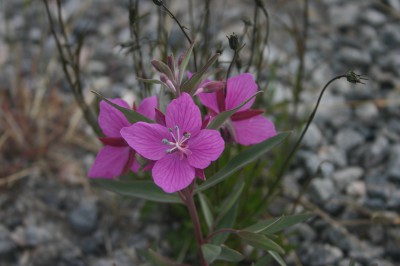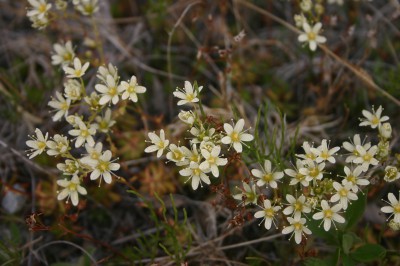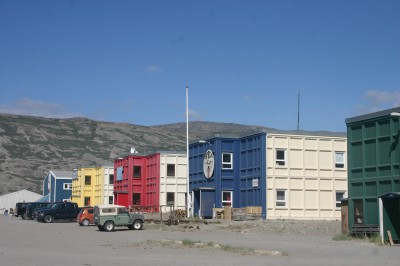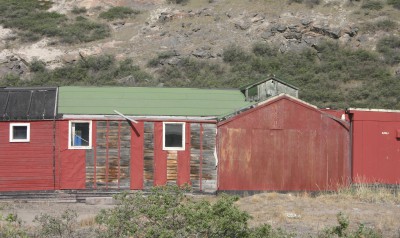
The
Greenland Ice Sheet is an astoundingly huge mass of ice and the second largest
ice sheet in the world (the one in Antarctica is bigger). Let me give you some
figures: It is three km deep in some places, almost 2400 km long and 1100 km
wide at its widest point. That is a lot of ice!! If it all melted, the global
seas would rise by seven metres. Despite global warming this will not happen
for many years to come. 
Some of the
ice in this incredibly thick block of ice is 110.000 years old. (As an
interesting aside some years ago in Copenhagen I was allowed to touch an ice
core containing such ancient ice from Greenland taken by Denmark’s leading professor
in ice and climate Dorte Dahl-Jensen and that was a big moment for me,)
Need I say
more? The ice sheet is massive and impressive.
I go on a guided ice sheet tour.
The bus from Kangerlussuaq follows a rough gravel road that Volkswagen
constructed years ago so they could get out to the ice sheet and test drive
their vehicles on the ice. This is the only place where you can actually drive
up to the edge of the ice sheet. Thank you Volkswagen. Along the way to the ice sheet we pass turquoise meltwater lakes and spot muskoxen and caribou.
Then the ice sheet itself comes
into view. What a sight! The bus shifts to a low gear and we rumble onwards on
a road that gets worse and worse. 

Finally, it is no longer a road so we disembark and follow a path strewn with rocks and boulders until we reach the ice sheet. Since 2001, the glacier streaming out from this part of the ice sheet has already retreated 300 metres.
We pick our
way carefully so we do not fall into bottomless cracks in the ice – a very real
danger. 
I imagine
that this landscape is pretty similar to how to Canada and northern Europe
looked during previous ice ages. It is fascinating to think how powerful ice is
at shaping the landscape. As glaciers leading off from the ice sheet move, they
drag silt, gravel and boulders with them on their way.  This is
This is
what gives the ice its less than pristine white appearance. It is actually
quite dirty in some places. I see a meltwater stream where the water is greyish
blue. The colour is due to the silt the water contains. The silt is very, very
fine but if you drink the water it can clog your kidneys, our guide tells us. 


 At first
At first









 What, then,
What, then,